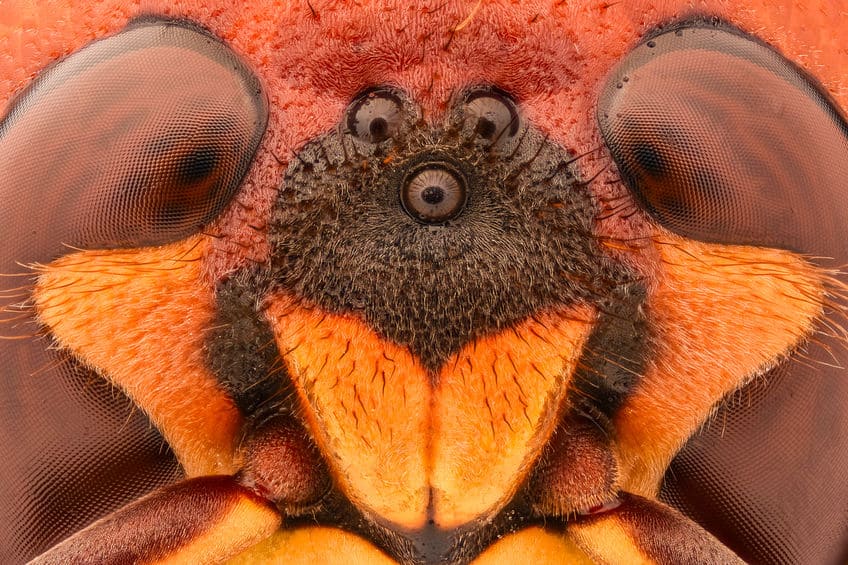Wasps like other insects perceive their environment in very different ways to humans. You may have wondered just what exactly wasps can see.
Wasps have five eyes. They have two compound eyes and three simple eyes. Their compound eyes have low resolution but give them an excellent range of vision and they are very acute at sensing movement. Their simple eyes provide increased sensitivity to light. Wasps’ ability to see in the dark is very limited, however. Wasps can also see a range of colors including green, yellow, and orange, but not red.
Let’s take a closer look at wasp vision.
Wasps have two types of eyes
Wasps have compound eyes and simple eyes. Compound eyes are made up of thousands of smaller eyes that all take in data and then combine to give a wasp a single image. Images from compound eyes give wasps and other insects an excellent range of vision. Wasps can see movement from behind them for example, much more effectively than we humans can. This is very helpful for wasps as they prey on other insects, as well as being prey themselves, and need quick reactions.
The problem with compound vision, however, is that it doesn’t provide the same clarity and focus as simple eyes. It should be noted, however, that like other insects wasps have antennae that provide other data such as smell and movement.

How many simple eyes do wasps have?
Wasps have three simple eyes, in other words, eyes that are not compound, in an upside-down triangle formation on their foreheads. Without magnification, these eyes appear as small black dots. These simple eyes allow wasps to clearly discern light and dark. These eyes have a simple lense, but do not have elaborate retinas that enable camera eyes as in humans.
Can wasps see in the dark?
The lower resolution of compound eyes makes it difficult for wasps to see in the dark, so wasps as a whole do not fly at night, although there are exceptions such as hornets. Read More. The simple eyes in wasps are thought to help wasps with this problem as they enable a far greater perception of light and dark. Larger wasps have larger simple eyes, which is one reason it is thought that hornets can see better in the dark.
There are nocturnal species of wasps such as the polybiine wasp found in South America. Notably, they have significantly larger simple eyes than other wasps species, and they are believed to navigate by moonlight.
Can wasps see colors?
It has been distinguished that wasps can see green, yellow and orange colors. As wasps feed to a great extent on nectar this ability to see colors helps them to find flowers. Although it’s possible that plants developed their colors as a way to attract certain insects for pollination.
Notably wasps, like other insects, can not see red colors as their spectrum of vision is different from humans. It is known that bees can also see ultraviolet light which humans can not. Many flowers when seen under ultraviolet light reveal hidden patterns that attract bees. It is likely that wasps also have this range of color vision.
